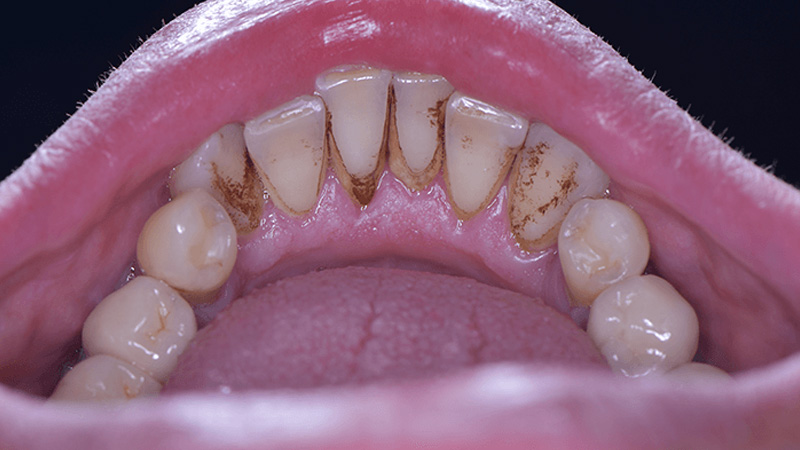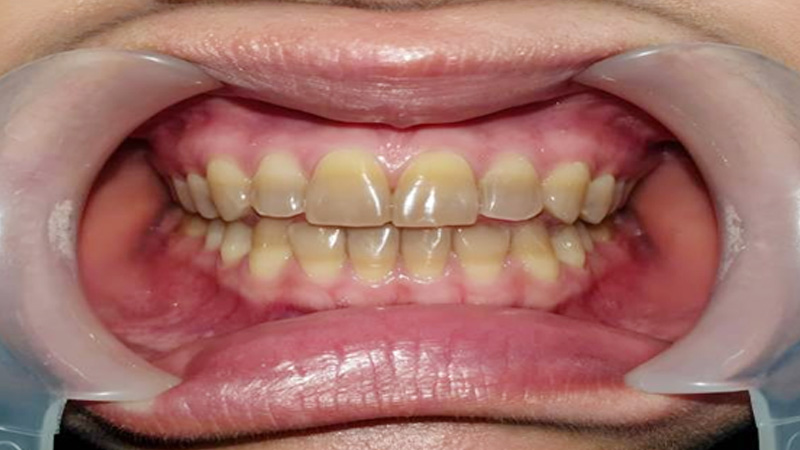Introduction: Is Your Smile Holding You Back?
Tooth discoloration is a common dental concern that affects people of all ages. Whether it’s due to lifestyle habits, aging, or underlying health issues, discolored teeth can greatly impact your confidence and the way others perceive your smile. At The Smile Spa, located in Juhu, we specialize in diagnosing and treating all types of tooth discoloration, helping our patients restore their natural smile with safe and effective methods.
What is Tooth Discoloration?
Tooth discoloration refers to any change in the color or brightness of your teeth. Teeth can turn yellow, brown, gray, or even black depending on the underlying cause. Discoloration can be extrinsic (surface stains) or intrinsic (internal changes), or a combination of both.
Major Causes of Tooth Discoloration
1. Extrinsic Discoloration (Surface Stains)
Extrinsic stains appear on the outer layer of the enamel and are often caused by :
- Consumption of dark-colored foods and drinks: Tea, coffee, red wine, colas, berries, and soy sauce.
- Tobacco use: Smoking or chewing tobacco leads to stubborn brown or yellow stains.
- Poor oral hygiene: Inadequate brushing and flossing allow plaque and stains to build up.
- Environmental factors: Fluoride in water and pollution may also play a role.

2. Intrinsic Discoloration (Internal Stains)
These occur within the tooth structure and may result from:
- Aging : Enamel thins over time, exposing the yellow dentin beneath.
- Trauma : Damage to a tooth can cause it to appear gray or black.
- Medications : Tetracycline antibiotics or excessive fluoride during tooth development.
- Dental restorations : Metal fillings can darken teeth over time.
- Genetics : Some individuals naturally have darker enamel or dentin.
3. Age-Related Discoloration
As we age, a combination of both extrinsic and intrinsic factors results in a noticeable change in tooth color. The natural enamel wears down, and long-term exposure to stain-causing substances darkens the teeth further.
Common Types of Tooth Stains
Yellow Teeth
Most often caused by poor oral hygiene, food and drink, or aging. The yellow appearance usually comes from exposed dentin or surface stains.
Brown Teeth
Tobacco, dark drinks, and certain mouthwashes contribute to brown discoloration. In some cases, it could also indicate tooth decay or tartar buildup.
Gray or Black Teeth
These are typically signs of internal trauma, metal fillings, or tooth death, and require immediate dental evaluation.

Professional Treatment Options at The Smile Spa, Juhu
At The Smile Spa, we offer a comprehensive range of tooth discoloration treatments tailored to individual needs.
1. Professional Teeth Whitening
We provide in-office bleaching treatments using advanced systems that safely whiten your teeth in just one session. Options include:
- Laser Teeth Whitening
- Zoom Whitening
- Custom Tray Take-Home Kits
These treatments target surface stains and are ideal for extrinsic discoloration.
2. Dental Veneers
For deep stains that cannot be removed with bleaching, porcelain veneers offer a permanent solution. Veneers are thin shells bonded to the front of teeth, instantly transforming your smile.
3. Dental Bonding
A quick and affordable method where a tooth-colored resin is applied to cover up discoloration and reshape the tooth.
4. Root Canal Treatment
If discoloration is due to trauma or infection, a root canal may be necessary to clean the infected pulp and restore the tooth's appearance with internal bleaching or crown placement.
5. Microabrasion
A technique where a small amount of enamel is removed using an abrasive substance to eliminate superficial stains.
Preventive Measures to Avoid Tooth Discoloration
Preventing tooth stains is easier than treating them. Here are practical steps you can follow:
Maintain Proper Oral Hygiene
Brush twice a day with a fluoride toothpaste, floss daily, and rinse with a non-alcoholic mouthwash.
Limit Stain-Causing Foods and Drinks
Reduce intake of coffee, tea, red wine, and sugary beverages. When consumed, rinse your mouth with water or brush your teeth soon after.
Avoid Tobacco

Smoking and chewing tobacco are among the worst offenders for tooth discoloration. Quitting these habits not only benefits your oral health but also your overall well-being.
Use a Straw
Drinking dark beverages through a straw helps minimize contact with your teeth.
Visit Your Dentist Regularly
Schedule biannual dental cleanings and check-ups at The Smile Spa to remove plaque and tartar and detect discoloration early.
Choose the Right Dental Products
Opt for whitening toothpaste and dental products recommended by your dentist to maintain your smile.
Why Choose The Smile Spa in Juhu for Tooth Discoloration Treatments?
At The Smile Spa, we pride ourselves on offering personalized dental care in a comfortable and advanced clinical setting. Here's why patients trust us:
- Experienced Dentists : Our Dentist has extensive experience in cosmetic and restorative dentistry.
- Advanced Technology : We use cutting-edge equipment and materials for effective and lasting results.
- Customized Treatments : Every patient receives a treatment plan designed around their unique needs and goals.
- Comfort-First Approach : We understand dental anxiety and ensure a pain-free, relaxed experience.
- Transparent Pricing : We offer affordable cosmetic dental treatments with no hidden costs.
Located conveniently in Juhu, we’re easily accessible to patients in Mumbai and nearby areas.
Restore Your Smile with The Smile Spa – Juhu’s Trusted Dental Clinic
Tooth discoloration can be more than just a cosmetic issue—it can affect your self-esteem and social interactions. At The Smile Spa, we combine science, art, and personalized care to help you regain a brighter, healthier smile.
If you're concerned about discolored teeth or want to explore professional whitening options, visit The Smile Spa in Juhu for a consultation today.
Rediscover your confidence with a radiant smile—because at The Smile Spa, your smile is our passion.
FAQs on Tooth Discoloration
Q. Is tooth discoloration permanent?
Not always. Surface stains can often be removed with professional cleaning or whitening. Intrinsic stains may require veneers or bonding.
Q. How often should I get my teeth whitened?
Depending on the method used and your lifestyle habits, once every 6–12 months is generally safe under dental supervision.
Q. Can children experience tooth discoloration?
Yes. Discoloration in children may be due to trauma, poor oral hygiene, or excessive fluoride exposure. It’s best evaluated by a pediatric dentist.
Q. Are whitening toothpastes effective?
Whitening toothpastes help remove surface stains but won’t significantly change tooth color or treat intrinsic stains.
